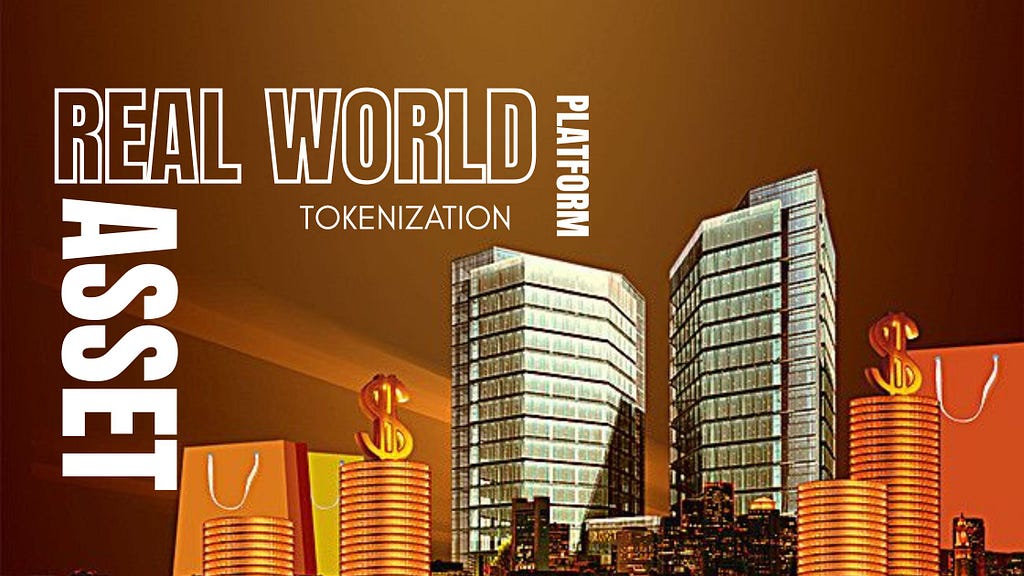a new type of financial system has started to grow: real world asset platforms. These platforms are changing how people invest by using blockchain technology to bring real-world items like real estate, gold, and art into the digital world. But what exactly is a real world asset platform, and why are investors putting time and money into them?
Let’s explore the meaning of these platforms, how they work, and the reasons behind their growing popularity.

A real world asset platform is a digital system that connects physical assets with blockchain networks. These platforms take real items — such as houses, company shares, or physical goods — and turn them into digital tokens. These tokens can then be bought, sold, or traded online, just like cryptocurrencies such as Bitcoin or Ethereum.
For example, if someone owns a building worth $1 million, they could use a real world asset platform to create 1 million tokens, each representing a small part of the building. Investors from anywhere in the world could then buy these tokens to own a part of the building and possibly earn a share of the rental income.
These platforms usually follow a few steps:
All of this happens using blockchain technology, which keeps a secure record of who owns what.
Many traditional investments, like real estate or art, are expensive and hard for rms, these high-cost items can be split into most people to buy into. With real world asset platfomaller, affordable parts. This allows more people to invest in things they couldn’t afford before.
For example, instead of needing $100,000 to invest in a property, someone might only need $100 to buy a token.
Real world asset platforms often run on blockchain networks, which don’t rely on one country’s system. This allows people from around the world to invest in assets located in other countries, which wasn’t easy before.
Blockchain technology keeps public records of ownership and transactions. This helps investors trust the system, as they can check information themselves rather than depending only on third parties.
By using these platforms, investors can spread their money across different types of assets — like property, business loans, or collectibles. This spreads risk and helps protect against loss if one investment goes badly.
Tokenization makes it possible to trade small parts of an asset, which means money doesn’t have to sit unused in big, illiquid investments. People can buy and sell tokens more easily than selling an entire house or loan.
Real world asset platforms are being used in many areas, including:
Each platform may focus on one or more types of assets, depending on its goals and user needs.
Real-world asset platforms offer numerous advantages, but they also present risks and difficulties.
Different countries have different laws about what can be sold and how. Real world asset platforms must follow legal rules, and these rules are still being shaped in many places. If the rules change, platforms might have to stop or change how they work.
It’s important to know that the real-world asset behind the token is real and properly owned. If a platform doesn’t do its checks carefully, investors could lose money.
The asset’s value may increase or decrease, just like with any investment. If the asset loses value, the tokens will too.
Since these platforms run on software and blockchain networks, there’s always a chance of bugs, hacks, or system failures.
Large investors, tech companies, and even banks are now working to create real world asset platforms. Here are a few reasons why:
By offering digital access to physical assets, companies can attract a wider group of customers and create new ways to earn income.
Tokenization and blockchain can reduce the need for middlemen, like brokers or legal teams. This can lower costs for everyone involved.
As younger investors become more active, they look for easy, digital ways to invest. These platforms offer that kind of experience.
There’s a strong interest in blending traditional finance with digital tools. Real world asset platforms are part of this shift.
These platforms are obviously more than simply a fad. As the technology becomes more trusted and legal systems become clearer, real world asset platforms may become a common part of global investing.
We may soon see more people investing in parts of buildings, artworks, or even farmland — right from their phones.
However, for these platforms to truly grow, they need to keep user trust, follow local rules, and make the process simple and clear for everyone.
Real world asset platforms are changing how we think about ownership and investing. By connecting physical assets with the digital world, they open the door for more people to take part in markets that were once hard to reach.
For investors, these platforms bring new chances to earn income and grow their portfolios. But like any investment, they also come with risks. As always, it’s important to do research, understand what you’re buying, and only invest money you can afford to lose.
Still, the rise of real world asset platforms shows how technology is reshaping finance — and creating a future where ownership is more open, flexible, and global than ever before.
What Are Real-World Asset Platforms — And Why Are Investors Creating Them? was originally published in Coinmonks on Medium, where people are continuing the conversation by highlighting and responding to this story.
Also read: They’ve Truly Taken over Bitcoin